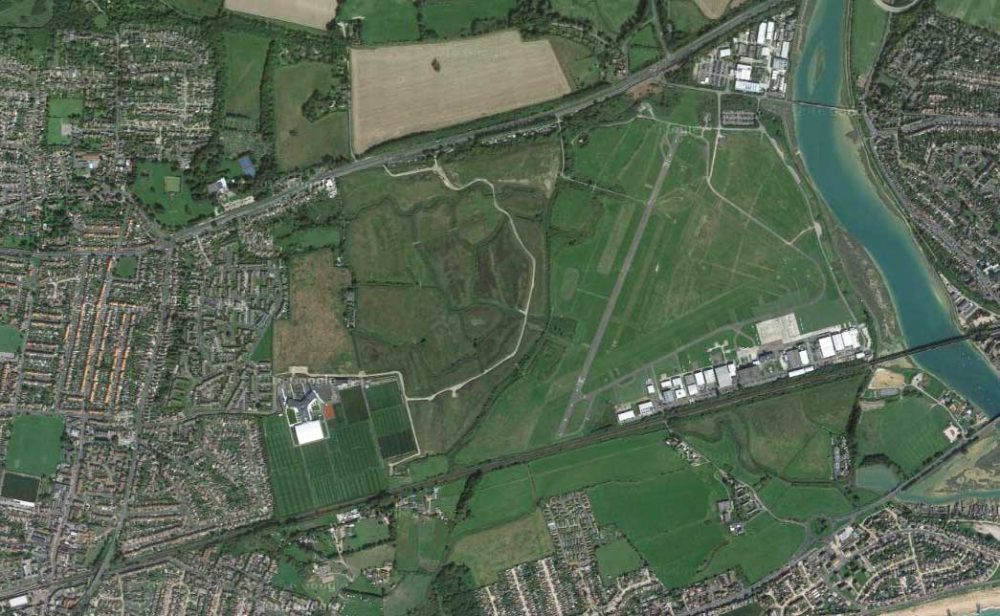A series of issues has been highlighted by the Air Accident Investigation Branch (AAIB) in its ongoing review of last summer’s Shoreham Airshow accident. They include the Flight Display Director not knowing what manouevres the pilot of the Hawker Hunter jet (G-BXFI) planned to make, which made it impossible for him to identify specific hazards.
The AAIB commissioned a review, by the Health and Safety Laboratory, of the risk assessment for the 2015 Shoreham Airshow. The review also considered the equivalent risk assessments for the 2013 and 2014 Shoreham Airshows. Its report stated:
“It was found that the Shoreham Airshow Air Display Risk Assessment contained a number of deficiencies compared to what would have been expected for a risk assessment to control risks to the public.”
The AAIB recalls the accident to Hawker Hurricane, G-HURR, at Shoreham on 15 September 2007. The AAIB issued the following Safety Recommendation:
“It is recommended that the UK Civil Aviation Authority requires that the sequence of manoeuvres for a flying display is clearly specified in advance of the display and provided to the display organiser and that the sequence is practised prior to displaying to the public.”
The CAA accepted this recommendation and in its formal response to the AAIB stated that it would amend CAP 403 at Edition 11 as follows: “The Flying Display Director during the planning phase of the event will be required to consider and manage pilot display programmes.”
Permit to Fly conditions
Furthermore, continues the AAIB report, G-BXFI’s Permit to Fly, issued by the CAA included the condition:
“The aircraft shall not be flown over any assembly of persons, or any congested area of a city town or settlement.”
The AAIB report says video footage of a previous display of G-BXFI at the 2014 Shoreham Airshow indicated that the majority of the aerobatic manoeuvres (including steeply banked turns) were conducted away from the airfield, over areas accessible to the public and outside the control of the display organisers.
“Footage and tracks determined from radar data showed that the aircraft overflew residential areas along the A259 south of Shoreham Airport several times and in one manoeuvre overflew the central area of the town of Lancing at an angle of bank in excess of 90°. The pilot was not instructed to stop this display. Either these regulatory infringements were not detected by the display organisers or were not understood.”
Accident rates at flying displays
The AAIB report also compares accident rates at flying displays, although this is based on estimates since the CAA does not monitor the accident rate for display flying, the number of display items or the number of hours flown by civil display aircraft in any year. However, the AAIB calculated that in the UK there has been 1 fatal accident per 2,960 display items in the period 2008 to 2015.
The International Council of Air Shows (ICAS), the flying display industry body in the United States of America (USA) and Canada, estimated that in the USA the civil air display accident rate is 1 fatal accident per 5,600 display items.
UK air display separation distances
The AAIB report examines the minimum separation distances between the display and crowd, including the effects of crash debris scattering. It says, “CAP 403 states the minimum separation distances required between the crowd line and relevant display line based on the speed of the displaying aircraft. These separation distances have been unchanged for several years.”
Conflicts of interest
The AAIB report says that in 2014 the pilot of G-BXFI was evaluated in relation to his Display Authorisation (DA) by a member of the same display team. This was also the case for the pilot involved in the 2015 fatal accident to Folland Gnat T.Mk1 G-TIMM26 at a flying display at Oulton Park, Cheshire.
EASA regulation and CAA policy for examiners in areas other than display flying requires the examiner to avoid any potential conflict of interest in their role.
For example, in the CAA’s Policy and Guidance for Examiners, it says, “Examiners shall not conduct skill test, proficiency checks or assessments of competence whenever they feel that their objectivity may be affected”. Examples of situation where the examiner should consider if his objectivity is affected are when the applicant is a relative or a friend of the examiner, or when they are linked by economical interests/political affiliations, etc.
It appears the CAA was aware of this and the AAIB provides this CAA quote: “The flying display community in the UK is a small group of individuals who are often well known to each other and the potential for conflicts of interests will always exist to some degree.”
The AAIB report can be downloaded in full from the link below. This is not the final report. The AAIB has yet to report on what actually caused the accident.
CAA response
The CAA said, “We have received the AAIB‘s latest bulletin from its ongoing investigation into the tragic accident at the Shoreham Air Show last year.
“The bulletin covers a number of areas that we have already taken action on as a result of our ongoing review of air display safety, which we established immediately after the Shoreham accident.
“We will now review the AAIB‘s bulletin in detail and consider all of its recommendations carefully. We will also factor the AAIB‘s findings into our ongoing review of air display safety, which we expect to complete in the coming weeks.”
AAIB Shoreham report
CAA Air Display Review












